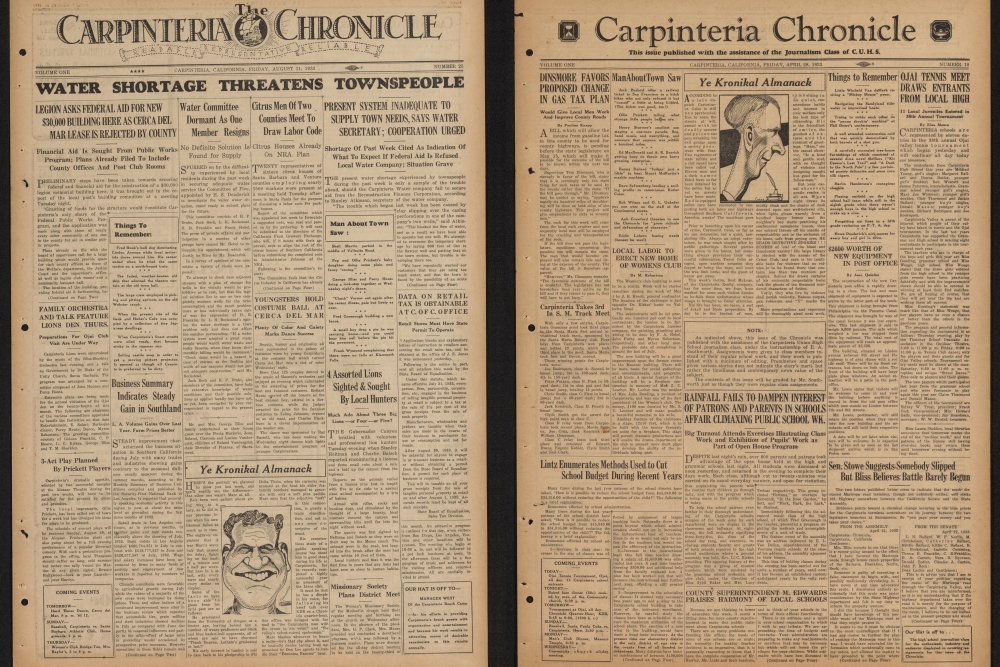Cleaning out a basement, attic, or garage is tedious work. But the drudgery is leavened by the hope that you might just find a piece of treasure ― a long-forgotten object that evokes the distant past.
That’s what happened to Carpinteria native Joe Escareno Jr. in April 2018. He and his sister were cleaning out their aunt’s house when they came across a bound stack of old newspapers. Resisting an initial impulse to toss them in the trash, Escareno called his childhood friend Jim Campos, a retired school administrator who has contributed to several volumes of Carpinteria history.
Campos was unenthusiastic at first, assuming they were copies of the well-known weekly newspaper the Carpinteria Herald. “But when he started describing them, I realized this was something different,” Campos recalled.
Indeed it was. Escareno had discovered copies of the long-forgotten one-time competitor to the Herald, the Carpinteria Chronicle. Until he held the copies in his hand, Campos had no idea it even existed.
The more he read, the more he realized that the 141 issues, published in 1933, 1934, and 1938, were a font of information regarding the community’s Depression-era attitudes and controversies. With the goal of both preserving them and providing the widest possible access to their content, he and Escareno decided to donate them to the UC Santa Barbara Library’s Department of Special Research Collections. Digital copies of each issue are now available at alexandria.ucsb.edu.
One topic that Campos found particularly compelling — and largely ignored by the rival Herald — was the Chronicle’s coverage of the creation of Aliso School in the 1930s. “Aliso School was originally built in the 1890s on Walnut Street — right in the middle of town,” Campos said. “It needed to be torn down, but rather than rebuild it there, they looked for a place to put it on the Mexican side of town, so they could have de facto segregation without breaking the law.”
This is made crystal clear in the headline on the March 29, 1934, issue: “School Board Election Held Tomorrow PM. Segregation Looms as an Issue.” As the story explains, three candidates were vying for two seats on the school board, and two of them “have committed themselves to the principle of segregation in local schools, and have endorsed the Aliso bond issue.” The third, a man named John Young, “is opposed to segregation beyond the fourth grade.” The results, as tabulated in the April 5, 1934, edition: Young got only 34 votes, compared to 227 and 219 for his opponents. The bond measure passed overwhelmingly.
The old Chronicle issues offer entertainment for today, too, in the form of advertising that appeared in their pages. A 1939 ad for Leibler’s Hi-Way Liquor Shop, “Carpinteria’s exclusive liquor shop for fine imported and domestic wines,” featured “fine wines in bulk,” including sherry and port for 93 cents per gallon, and burgundy, zinfandel, and claret for 58 cents per gallon. The costs were apparently BYOJ — bring your own jug.
This story was originally published by UCSB’s The Current on December 10, 2019.

